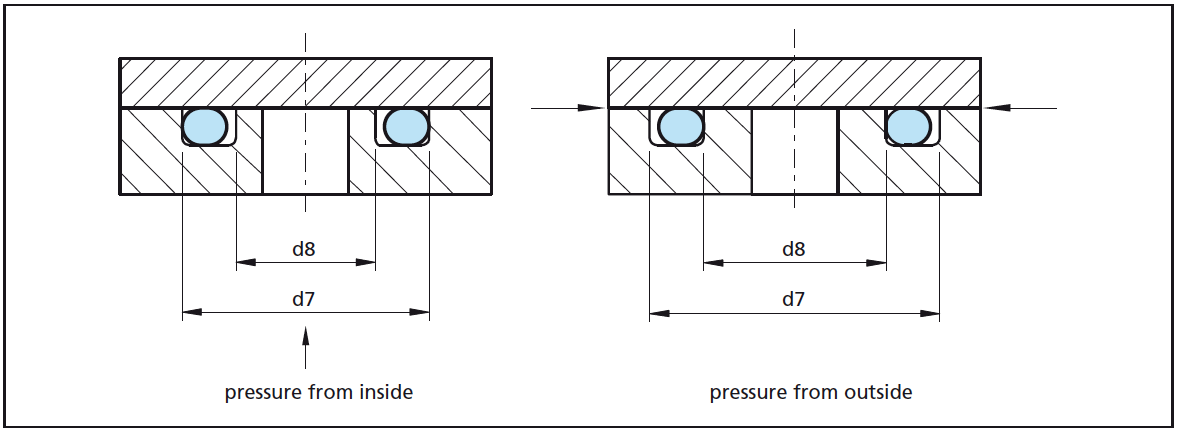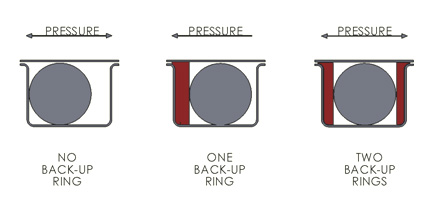O'ring Slot Design
Slot car chassis and chassis kit products available at Professor Motor, Inc.
Of the four characteristics that define an o-ring (material, durometer, color, and size), determining and properly communicating the exact size needed is often the trickiest part of an order. Applying tried and true methods for determining the correct size will save you time in the short-term and frustration and additional cost down the road. Read on to learn how to properly size an o-ring the first time around.

How to Measure O-Ring CS and ID

- Dovetail grooves are used to hold the O-ring in place during installation or maintenance. This groove design is relatively uncommon as it is expensive to machine and should not be used unless absolutely required. The dovetail groove construction is only recommended for O-rings with cross sections of.139 inch (3,53 mm) and larger.
- O-ring groove design guides offer default dimensional guidance on the most basic o-ring groove design applications. The best o-rings are useless without the right groove design which becomes increasingly important the more demanding the application environment.
- Metric o-ring groove designs vary greatly and choosing the right one for your application is important for maximum o-ring performance. This metric o-ring groove design reference guide will help you find the right radius, back-up, pressure and other o-ring dimensions for basic applications.
The best way to size an o-ring is by measuring the CS (cross-section) and ID (inside diameter). For measuring the cross-section, it is best to use a caliper, a.k.a. micrometer. If you don’t have one available, various other sizing tools can be used to get a close estimate.
When measuring very small IDs, it is also best to use a caliper. For larger IDs (over 6 inches), it is best to use an O-Sizer or Pi-Tape.


Once the CS and ID of the o-ring are determined, you can use our AS568 O-Ring Size Chart to determine if these dimensions correspond to one of the “standard” sizes.
Shop For O-RingsMetric vs Standard O-Ring Sizes and Tolerances
All o-rings can be described by either metric (mm) or standard (inch) dimensions. However, if the o-ring matches an AS568 size, that’s the best way to reference it since this is the most common standard here in the USA. If not, you may be able to find a “metric” o-ring that matches the dimensions you need.
One important thing to consider when sizing o-rings is tolerances. Due to manufacturing limitations, there will always be some variance in the dimensions of o-rings. These variances are called tolerances, and the standard acceptable tolerances are specified in the previously mentioned AS568 O-Ring Size Chart or the Metric Tolerances Chart for Metric O-rings. As an example, for any of the AS568 100 Series o-rings, the cross-section is .103” with a tolerance of ± .003”. This means the cross-section could measure as small as .100” or as large as .106”.
O-Ring Standard (AS568) Sizes
If the CS is one of the standard AS568 sizes such as .070, .103, .139, .210, or .275 inches, then you probably have a standard-sized o-ring. Measure its ID, and look it up on a size chart. If the ID is listed on the chart (or within tolerance), you have a standard size. Look up the 3-digit “dash” # and that will be your o-ring size.
Metric O-Ring Sizes
If the CS of the o-ring is not one of the standard AS568 sizes, then you may have a “metric” o-ring. In this case, simply measure the CS and the ID as discussed above to identify the size needed on our metric size chart. At Global O-Ring, we identify metric sizes by their CS X ID in the format #.##X###. So for example, a 1 mm CS X 5 mm ID o-ring would be 1.00X005.
Various Tools to Size an O-Ring & Best Applications
It may be tempting to use a ruler or tape measure, but these will not give you the detailed measurements you need. Instead, we recommend the following tools (all available in the Global O-Ring and Seal store) to size o-rings:

- Laminated Size Chart for AS568 Sizes – Stop here to get our easy to use flip chart featuring the silhouettes of 239 different sizes of o-rings.
- Molded Sizing Cone – Place your o-ring on this cone to see if it is the same size as one of our 184 most popular sizes.
- Sizing Gauge – This sliding gauge can measure the inside diameter of an o-ring up to 13 inches.
- Calipers – A preferred tool for precise measurement, this sliding tool can measure the diameter and length of many components, including o-rings. Most calipers will only extend 6 inches, and a different tool is needed for those larger than 6” IDs.
- O-Sizer – This specially designed o-ring measuring tape comes in three different sizes and is used to measure the ID of metric and AS568 o-rings up to 26”.
- Pi-Tape – The most precise tool to measure the inside diameter of an o-ring. Pi-Tapes are metal precision-engineered tapes designed for the specific purpose of measuring the ID of a round object. Each Pi Tape will measure to the thousandths of an inch (.001”). There are various size options depending on the ID you need to measure, but the most common sizes are 2-12”, 12-24”, 24-36”, 36-48”, and 48-60”.
Global O-Ring and Seal’s Sizes Selection for O-Rings
Global O-Ring and Seal carries a full line of o-rings in all standard AS568 and most metric sizes. We are also here to guide you through the sizing process. Give us a call at 832-448-5550 to speak with an Industry Expert, or if you are local to the Houston area, come visit us at our Will Call department for more help on sizing o-rings.